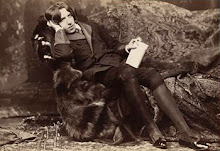
Easter in Romania is celebrated according to the rituals of the Eastern Orthodox Church. The Friday before the Easter is called the Great Friday or the Friday of sufferings, as it is the day when Jesus was crucified. On Saturday, people go to church for the midnight mass, taking with them a bowl of Pasca, eggs and steak, where these aliments are blessed by the clergy. On returning home from the mass, people first eat some of the sanctified aliments and only then the rest.
Starting with Holy Thursday, people start painting eggs in a multitude of colors. The predominant color is red, but other colors are also applied - yellow, green, blue and even black. Decorated eggs or 'oua incondeiate' are an integral part of Easter celebration in Romania. The eggs are decorated using a stick of wood.
The special Easter cake, known as Pasca, is baked on Great Thursday. The Pasca can have a round shape (reminding little Jesus' diapers) or a rectangular one (the shape of His grave). The shells of the eggs used for the Pasca are thrown in a river. This action stems from the ancient belief that the shells are taken by the river to the country of the Good People, announcing them the Easter has came.
In some regions (Bucovina, Transylvania), there is a tradition called "the wetting". On Monday morning, the boys take a bucket of water and go to the houses of the unmarried girls. If they found them sleeping, the boys throw water on them. As it is believed that those girls will marry soon, they reward the boys who had wetted them by giving them the most beautiful decorated eggs and Pasca or cake.

























1 comment:
We can see the striking similarities between our people's customs! We too, paint eggs red, but as to soaking the girls, this is a near-to-be school custom on the last week before exams. The kids are soaked and happy, the teachers yell that they will catch cold!
As soon as the team gets back, we'll comment on the watering custom.
Have a very happy Easter!
Post a Comment